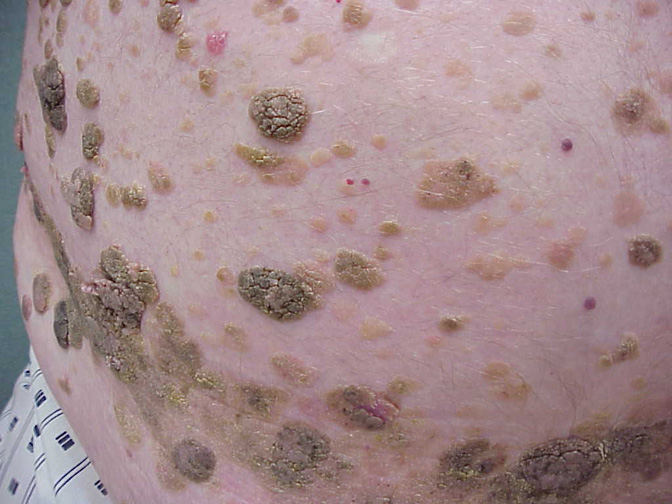Seborrheic Keratoses are one of the most common skin lesions that I encounter in both my The Woodlands dermatology and Conroe dermatology offices. Approximately, 92% of the population is affected by Seborrheic Keratoses. Seborrehic Keratoses are genetically programmed to appear on the skin and typically begin after age 30. Over time, the skin accumulates more and more Seborrheic Keratoses. Clinically, Seborrheic Keratoses appear as scaly brown or black plaques and usually have a warty surface. Seborrheic Keratoses appear “stuck on” the skin and can be easily removed by scraping them off with a sharp instrument. Many names have been attached to Seborrheic Keratoses: age spots, barnacles, gifts of time, wisdom spots. Seborrheic Keratoses can occur on any anatomic location and there are over 10 clinical variants ranging from flat almost imperceptible patches to large warty nodules. Seborrheic Keratoses do not need to be treated unless they become irritated as they have no malignant potential. In my opinion, Seborrheic Keratoses serve a very useful function in that they are very concerning to patients and can be the reason for a visit to a dermatologist in which more serious cancers such as melanoma are detected during a skin cancer screening. Treatment of Seborrheic Keratoses usually involves liquid nitrogen destruction, but very large lesions can be shaved off or excised.





